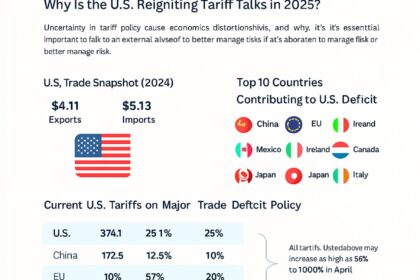Trading S&P 500 futures is one of the most efficient ways for investors to gain exposure to the broader U.S. stock market. These futures contracts track the performance of the S&P 500 index and are widely used for hedging, speculating, and managing portfolio risk. To trade effectively, especially in fast-paced markets, selecting from the best futures trading platforms is crucial. This article explores the essential features traders should look for when evaluating platforms specifically suited for S&P 500 futures.
1. Real-Time Market Data and Advanced Charting Tools
For S&P 500 futures traders, every second counts. The ability to access real-time market data and interpret it quickly is a foundational need.
Why It Matters:
- Futures markets are volatile and time-sensitive: Price moves can happen in milliseconds.
- Real-time quotes help traders capture entry and exit points with accuracy.
- Advanced charting tools enable users to identify technical patterns, set indicators, and make data-driven decisions.
What to Look For:
- Live tick-by-tick price updates for S&P 500 futures (ES contracts)
- Customizable charts with tools like RSI, MACD, Bollinger Bands, and Fibonacci retracements
- Historical price data for backtesting strategies
Best futures trading platforms like NinjaTrader, Thinkorswim, and TradeStation offer powerful charting suites tailored for futures trading.
2. Fast and Reliable Trade Execution
Slippage and latency can turn a profitable trade into a loss. For those trading S&P 500 futures, the trade execution speed and reliability of a platform can make a huge difference.
Key Execution Features:
- Low-latency order routing
- Direct Market Access (DMA)
- Smart order routing algorithms
- Server-side bracket and OCO (One Cancels the Other) orders
Platforms should be able to handle high-frequency trading (HFT) environments without crashing or lagging. Consistent uptime, especially during volatile market hours like U.S. open and close, is essential.
3. Low and Transparent Commission Structures
S&P 500 futures contracts trade in high volumes. Even small differences in fees can significantly affect profitability. Choosing platforms with competitive commissions and transparent pricing is critical.
Evaluate These Pricing Aspects:
- Per-contract fees (some charge as low as $0.20 per side)
- Exchange and NFA fees
- Platform usage fees (some are free with minimum trading activity)
- Clearing and routing costs
Some of the best futures trading platforms like Interactive Brokers and Optimus Futures offer tiered pricing models and volume discounts.
4. Margin and Leverage Capabilities
S&P 500 futures require traders to manage margin requirements carefully. The intraday and overnight margins vary across brokers and platforms, influencing capital efficiency.
Why It Matters:
- Lower intraday margins allow for greater position sizing with limited capital
- Leverage can amplify gains but also increase risk, so tools for risk management are key
Check whether the platform offers:
- Competitive margin requirements
- Clear margin call and liquidation policies
- Real-time margin calculator and risk metrics
Platforms like AMP Futures and Tradovate are well-regarded for offering flexible and low-margin requirements.
5. Integrated Risk Management Tools
Trading futures without a solid risk management plan is a recipe for disaster. The best futures trading platforms for S&P 500 futures integrate robust risk management features.
Essential Risk Tools:
- Stop-loss and take-profit orders
- Trailing stops
- Daily loss limits and alerts
- Position sizing calculators
Some platforms also offer automated rules to lock accounts after reaching pre-set loss thresholds, which is especially helpful for new traders learning discipline.
6. Mobile and Multi-Device Accessibility
Modern traders demand flexibility, and the ability to monitor and execute trades on the go is a major advantage.
Must-Have Mobile Features:
- Real-time streaming data on mobile devices
- Secure login and biometric access
- Full-featured trading dashboards
Platforms like TD Ameritrade’s Thinkorswim and NinjaTrader offer mobile apps with nearly identical functionality to their desktop counterparts, allowing for continuous market engagement.
7. Educational Resources and Demo Accounts
For those new to S&P 500 futures, learning and practice are key. The best futures trading platforms offer rich educational content and simulated trading environments.
What to Look For:
- Video tutorials and webinars focused on futures trading
- Articles on strategies, indicators, and platform use
- Paper trading or demo accounts with real market data
These tools are essential for futures trading beginners looking to build confidence before risking real capital.
8. Platform Customization and Algorithmic Trading Support
Advanced traders often want to tailor the interface and build their own strategies using automated systems.
Customization Features:
- Hotkey programming for fast order placement
- Customizable trading layouts and dashboards
- Ability to code trading bots using Python, C#, or proprietary scripting languages
Platforms like MetaTrader 5, Sierra Chart, and NinjaTrader stand out for offering excellent automation capabilities and API support for S&P 500 futures.
9. Customer Support and Community Access
Quality customer support can save traders time and money when issues arise. A vibrant user community also fosters idea sharing and peer learning.
Preferred Support Options:
- 24/7 technical support via chat, email, and phone
- Dedicated account managers
- Access to user forums or trading communities
A platform with both responsive support and a large, engaged trader base can provide added value beyond technical functionality.
Conclusion: Selecting the Best Platform for S&P 500 Futures Success
Trading S&P 500 futures effectively requires more than just a good strategy—it demands a platform that meets professional standards in speed, reliability, pricing, and user experience. Whether you’re a seasoned trader or a beginner looking to enter the futures market, focusing on the features outlined above will help you choose among the best futures trading platforms and set yourself up for long-term trading success.
